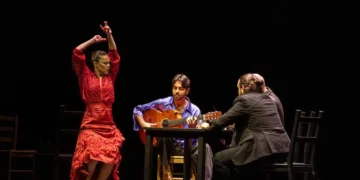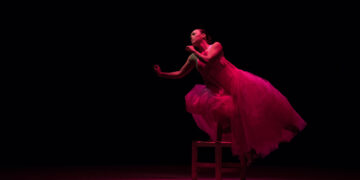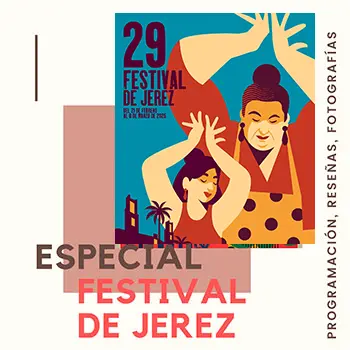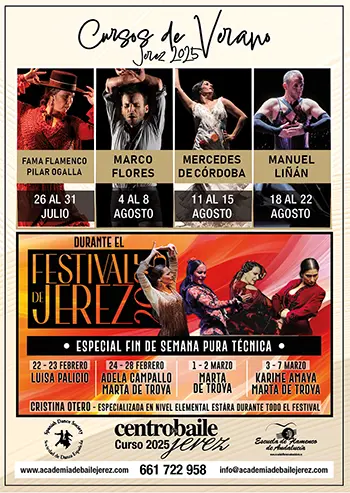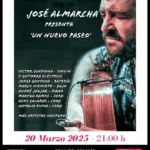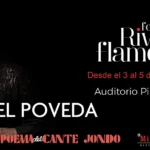|
‘ORO VIEJO’ |
||||
|
SPECIAL BIENAL DE FLAMENCO DE SEVILLA 2008 Text: Estela Zatania Dance: Rocío Molina, Eduardo Guerrero, Moisés Navarro. Special guest artist: Laura Rozalén. Guitar: Paco Cruz, Rafael Rodríguez. Percussion: Sergio Martínez. Palmas: Bobote, Eléctrico. Guest singer: Rosario Guerrero ‘La Tremendita’. At only 24, you don’t know whether Rocío Molina is a child prodigy, precocious young adult or simply a genius. The “simple” truth is most likely she’s all three, because the girl from Málaga who’s been stirring up flamenco dance almost without meaning to, just dancing what she feels the need to dance and communicating with her audience via a perfect direct line, last night once again demonstrated her abilities. Maybe it’s an exaggeration to say Molina is doing for women’s flamenco dance, what Israel Galván did for the men, but between one thing and another, that’s what it amounts to, because not only is she a great dancer, but she is imaginative, inquisitive and has an industrial-size intellect as well. “Oro Viejo” is a “world premiere”, a phrase which strikes fear in the heart of every flamenco fan…well…in mine. Because the label usually means “lots of funding and high ambitions, with little real content”, a product made for the global market for individuals who have not the least interest in flamenco, or even run in the other direction when they see it coming. It is usually domesticated flamenco for G-rated audiences. This show actually has some good moments, but on the whole, the “oro” (gold) of the title is 18-karat pure Rocío Molina. There is a vague thread throughout the show that has to do with the passage of time, and this is at least the fourth work of the Bienal with similar references or aesthetic. Images of elderly people are projected, water falls, drop by drop, from the ceiling, directly into little bowls distributed around the stage, and recorded retro music of old songs like María de la O, Falsa Moneda or martinete are heard. Yes, I know, martinete isn’t an old “song”, but we have to make do with the recorded voices of Periñaca and Pepe Marchena (not credited on the program), because young singer Tremendita is once again made to sing strange melodies with a strange voice (she does a fine job with a fandango of Vallejo however). In fact, you notice the dearth of cante. A lot. The two male dancers, Moisés Navarro and Eduardo Guerrero, are excellent, whether dancing or acting. Laura Rozalén insists on projecting a coquettish personality when other women of her size have understood that a large body best expresses more fundamental, less superficial values. Rafael Rodríguez on guitar continues to be one of the few guitarists specialized in accompaniment to have his own personality – in a delightful guajira danced by Rocío, you barely notice the absence of cante, thanks to his versatility. In actual fact, everything revolves around Rocío, who looks like an Andalusian version of Princess Leia from Star Wars. You don’t want to miss one second of her half-conceptual, half-oniric dance. “Ponme la Mano Aquí, Catalina”, a famous rumba, is done with funky percussion and a straw hat, a tasty bit of memorabilia, full of life. Rocío has no problems with including broad strokes of humor, freshness, light, and also erotic references. Caña, a malagueña of Chacón in which Rodríguez plays the cante portion, Rocío in high trousers and short bolero jacket, Carmen Amaya-style, with speed-ups to match… Lots of good elements, and the inexplicable lack of cante which could have tied everything up coherently.
|
||||



 XV BIENAL DE FLAMENCO DE SEVILLA
XV BIENAL DE FLAMENCO DE SEVILLA
